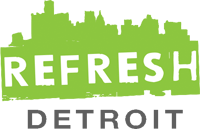Last week we were lucky enough to have Brad Colbow talk about designing interfaces for mobile devices. Brad has extensive experience explaining usability and produces a Web comic called “The Brads.”
The Presentation
Notes from the meeting:
- Brad works from home and has a specific routine that he follows every morning. One day that routine was interrupted because his daughter was having friends over. So he decided to work from a friend’s office which was quite some time away.
- He decided that he would pass the time driving by downloading an audiobook from his local library. He browsed the website and found the book he wanted. He then went on to download the book and found the experience so frustrating that he made it a topic of one of his cartoons: Why DRM Doesn’t Work.
- He loves to take dense mental model information and turn it in to a comic strip that anyone can understand
- Brad’s day job was building magazines for iPad and iPhone. They didn’t have an iPad yet, so they started on the iPhone and thought they could scale up from there. They knew that magazines needed to be better digital than print. They started with the user interaction guidelines that are available for iOS, Android, Blackberry, etc.
- What is the secret to creating a great user experience?
- Looking at experiences they liked
- Listed reasons and tried to figure it out
- When you study a bad experience you can easily figure it out
- What could they use as a bad experience? The Library
- The little details matter
- On the library website when you browse for audiobooks you see and can search the entire selection. But when you decide on one and are ready to download it you get an “Add to SelectList” option. What is a “SelectList?” It’s not even a real word..
- In a real library if you can see a book on the shelf, you can check it out. That experience isn’t mirror on the library website.
- Stuff like this is not nitpicking. It’s not the big thing that gets you, it’s all the little things that bother you over time.
- Brad outlined some great user experiences, for example using Dribbble on an iPad. iOS will auto capitalize the first word typed, usernames are case sensitive, so when you login to the website you have to be sure the first letter of your username is lowercase. This is a minor inconvenience but because these two systems obviously have their own motivations it is justified. But the developers of Dribbble must have experienced this first had and added “autocapitalize=”off”” to their username field. It is these little details that make it such a great experience.
- Brad then went on to outline a few UI differences between iOS and Android and why designing a single interface won’t delight the users of both OS’s. The users of each OS are use to a certain button placement and experience.
- Some best practices
- Don’t let the UI hinder the experience
- Be Skewmorphic sparsely
- Elevate the content people care about
- Mobile websites are to do something one time and be done with it. Don’t put an ad on your site to download the app.
- Avoid forcing the user to rotate the device
- Don’t make up new touch gestures
- Avoid help. If you need an instruction manual, you’re doing it wrong
- If your app needs help, your app needs help.
Full presentation available at: https://speakerdeck.com/u/bcolbow/p/its-the-little-things
